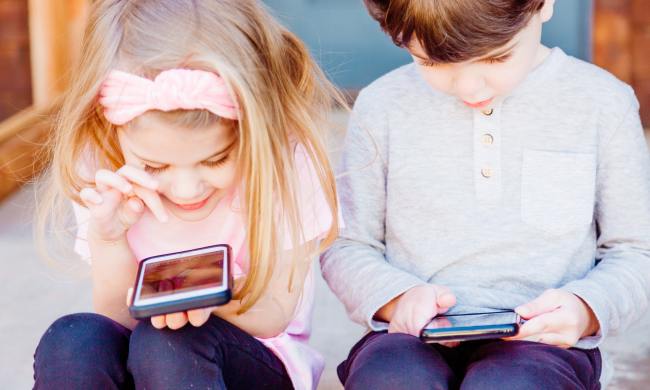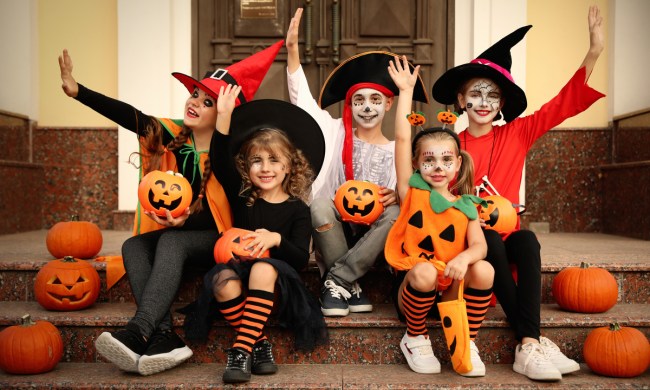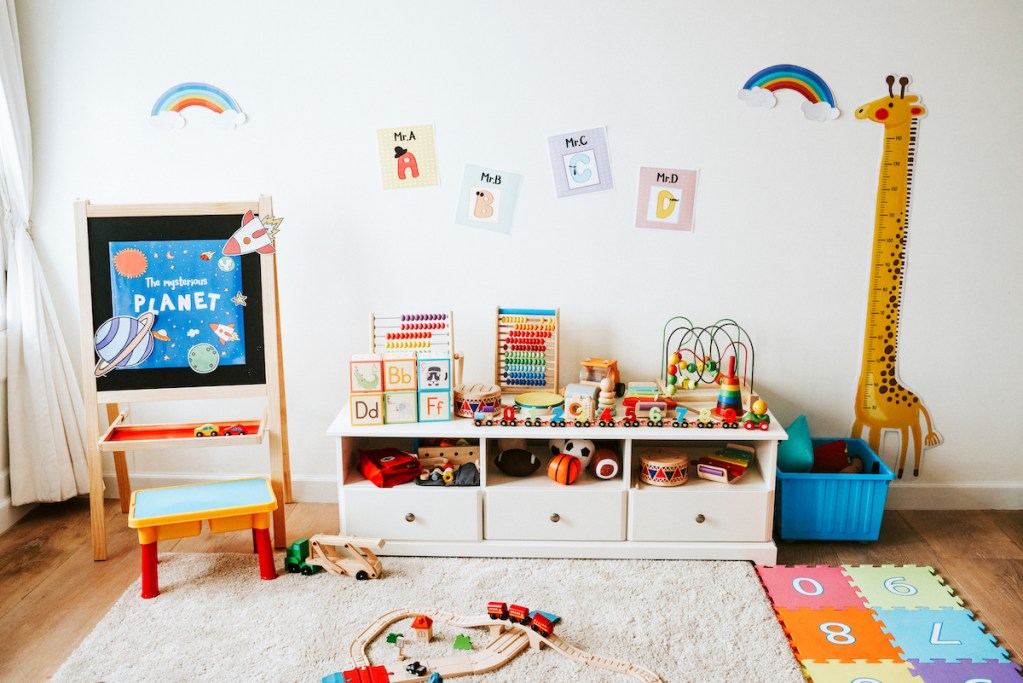
The kid’s playroom should be a space not just for fun and letting off some of a child’s youthful energy, but also an educational hub that encourages imagination. As you curate a space for your child to play and grow, you’ll want to include unique activities to help them express themselves. So, we’re giving you some incredible DIY playroom ideas that not only make the space look nice but add more room for imaginative play and learning.
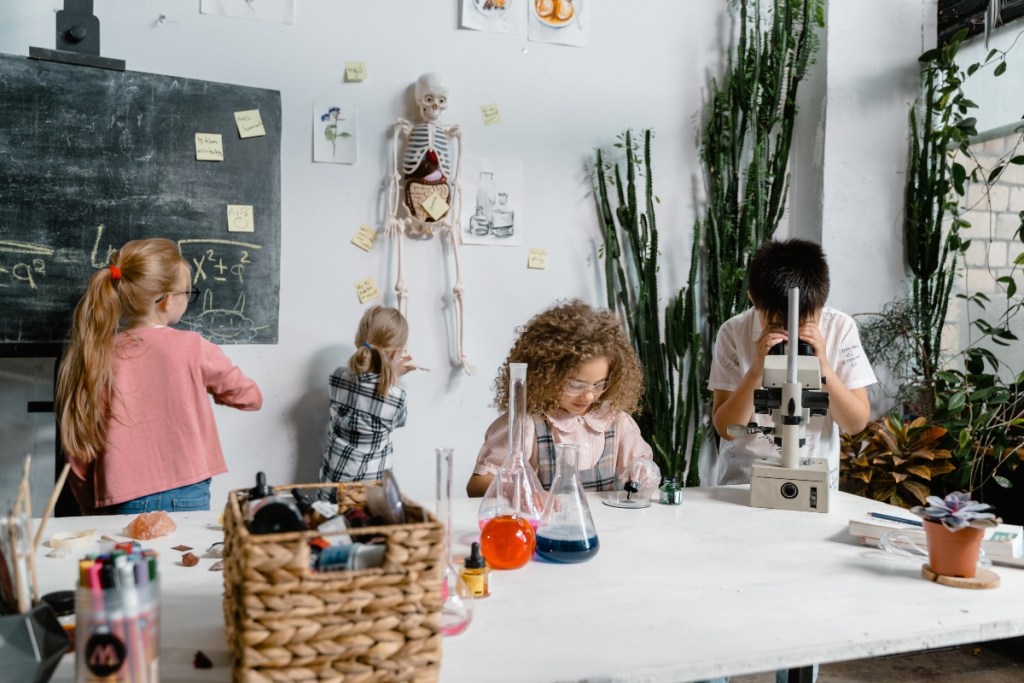
Add a chalkboard wall
A chalkboard wall is a classic playroom addition, functioning as both a teaching opportunity and an art station. Not to mention; it also curbs that desire to draw on the walls!
DIYing a chalkboard wall in the playroom is super easy. You only need a few feet of 1/2-inch of wood trim, chalk paint, nails, and a nail gun. First, determine how big you want the chalkboard section of the wall to be. You can also experiment with unique shapes, like creating a house, an octagon, a triangle, and more. Once you determine the shape you want and you’ve taken your measurements, you can cut the wood trim to size and use your nail gun to secure it to the wall.
Use the chalkboard paint to coat the portion of the wall where you want the chalkboard to be. You may need to add a few coats to achieve full coverage. Once you’re done, hang up a basket of chalk and some erasers nearby for a fun chalkboard activity space.
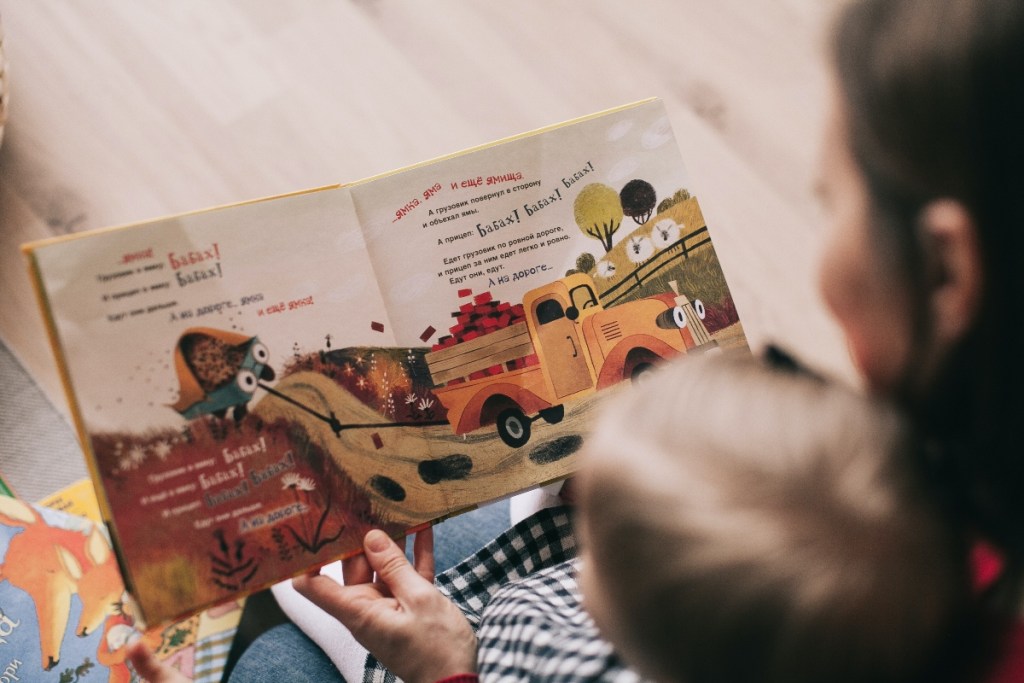
Create a DIY a bookshelf tree
Bookshelves are a must-have in any playroom. But the classic standing shelf isn’t always the most space-saving solution. Additionally, wall shelves can appear boring and uninspiring. Instead of opting for the classic bookshelf, consider a bookshelf tree. You can maneuver the shelves into a tree shape using pre-cut wood to hold your children’s books. The wood’s size depends on your needs and the space available. But just be sure to add a few horizontal or low-angled shelves so you can stack books on top.
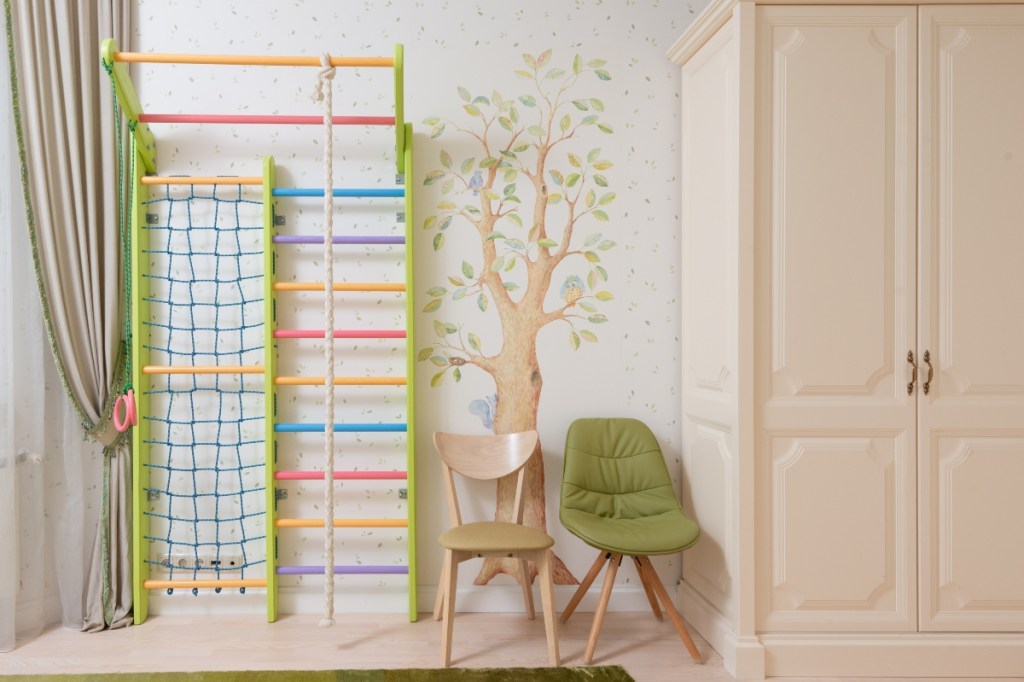
Go for a wall mural
Adding a wall mural is a fun way to bring more color and imagination to the playroom design. A wall mural can be a fun addition to the space and is great for the artistically inclined parent. For a fun weekend project, consider adding a unique and playful mural to a blank wall. However, your mural doesn’t have to be a hand-painted one! Wall stickers and wall art decals can also work wonders. Find what works for you and consider whether you want to add animals, plants, rainbows, or abstract designs to the space.
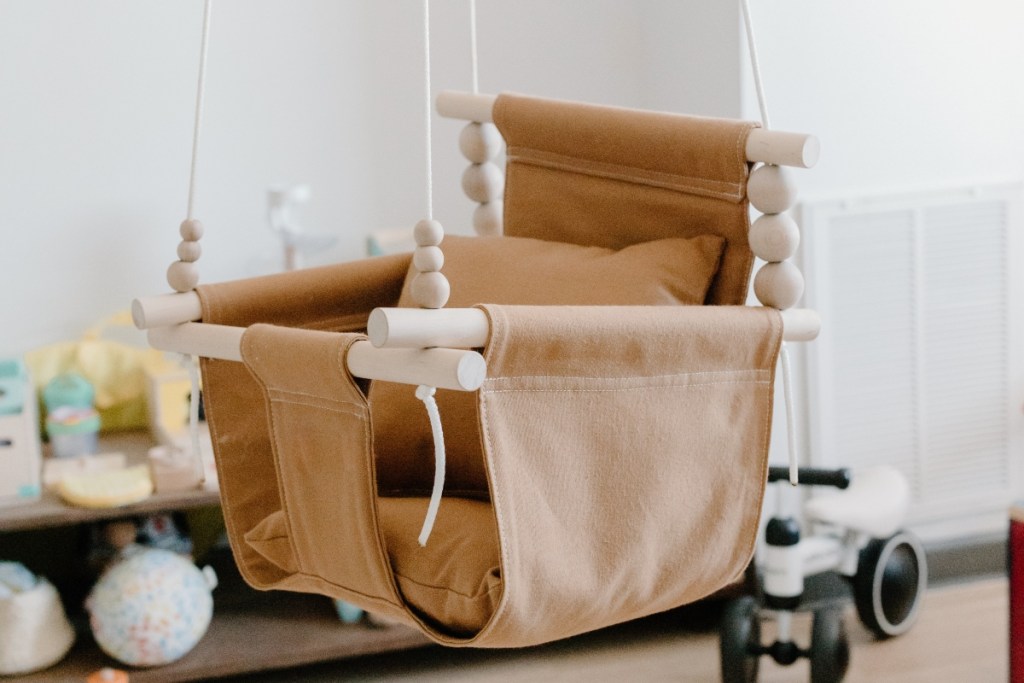
Hang a swing
A hanging swing is a creative way to include seating in a playroom. Not only does a hanging swing offer space for seating and curling up with a good picture book, but it adds a fun indoor physical activity for rainy days. And it’s more affordable and easier to install than a built-in trampoline or ball pit. Also, you can hang multiple swings in the space so everyone can enjoy this unique seating solution, no matter their age.
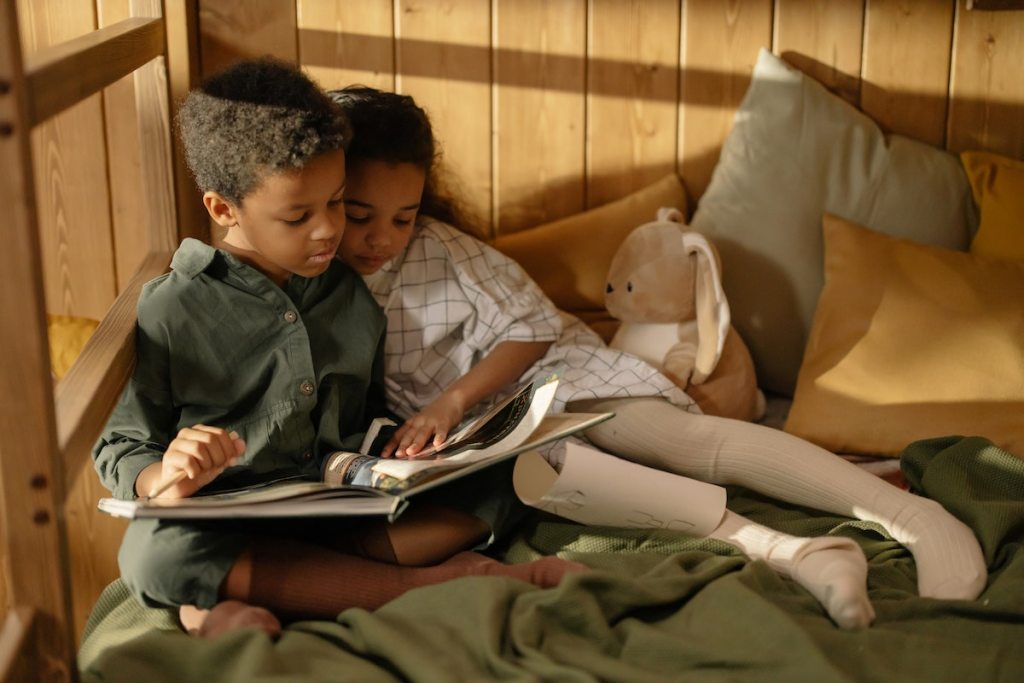
Try a forest-inspired reading nook
For a more imaginative take on a children’s reading nook, why not create a magical forest-inspired space? Using faux plants, wall murals, mushroom stools, beanbag chairs, and fake vines, you can create a secluded hideaway nook perfect for reading sessions. Get creative with the space and design a fun forest aesthetic with several unique touches, like stuffed animals nestled in the faux trees. You can also add string fairy lights to create a magical forest reading nook that you and your kids can enjoy.
While the playroom needs to be functional, it doesn’t have to be boring. With these ingenious DIY playroom ideas, you can spark your child’s imagination and encourage educational and exciting playtime.

